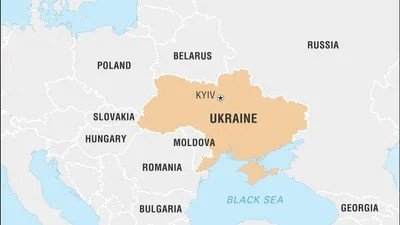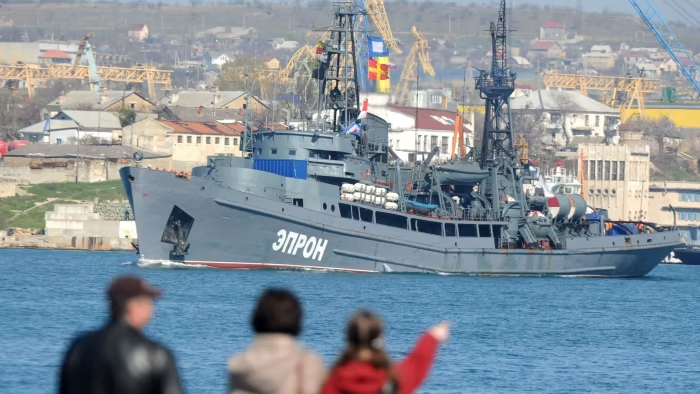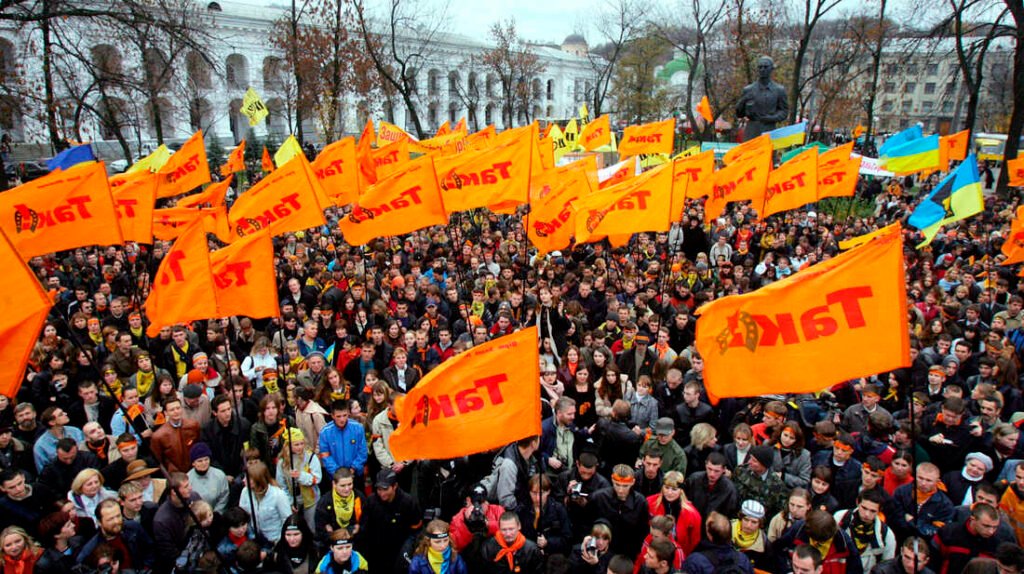Shayan Hassan
Peace is fragile; it needs constant nurturing. This fragile peace has shattered the world in general and Europe in particular. The full-fledged war between Russia and Ukraine started on February 24, 2022 when Russian President Vladimir Putin announced a ”full-scale military operation” in Ukraine. He further claimed that he had no intention to occupy the land of Ukraine.
Ukraine is part of Eastern Europe and is the second-largest state by area after Russia. In its north lies Belarus; in East, Russia; in South, the Sea of Azov and the Black Sea; and in Southeast, Moldova, Romania, and Poland.

Causes of Russia-Ukraine War
There are several causes and reasons for this war:
Ideological and Cultural Reason
Russians believed that the Russian civilization took birth in the territory of Ukraine, which they called “Okriyana,” which means “mother” in the Russian language.
Russians also believed that they had a cultural and ideological connection with Ukraine, which is the main reason Russia is not giving up on the war.
Russia also accepts Ukraine as an integral and civilizational part of the former USSR.
That is the main reason that today, Russia still considers Ukraine as a backyard of Russia.Its always prioritized its influence on Ukraine.
On the other hand, Ukrainians have always believed that they have a separate identity from Russia.
They also supported the idea that the foundation of Eastern European civilization started from the capital, Kyiv; as per Ukraine, the Kyivian civilization holds the truth. In addition, Ukraine has never accepted Russia’s dominance.
Military-Strategic Factor
Ukraine is very significant for Russia in the military and strategic context.
There are several reasons for this significance, including the fact that Russia’s border is directly connected with Russia, Russia has cold water, and its outreach to the rest of the world is minimal.
In this sense, the Crimean Peninsula is the only way that provides a way toward the warm water.
That was the reason behind the annexation of Russia on Crimmia, and it also placed its naval base on Sevastopol.

Russian troops are mobilized in this naval base. The Sea of Azov and the Mediterranean Sea are in the center, and Russia maintains its outreach and access to the coastal area of the Mediterranean Sea. Militarily, it is a very strategic point for Russia.
Similarly, the United States wants to contain Russia, and Joe Biden administration apparently wanted Ukraine to receive full NATO membership.
Several engagements were held about NATO membership for Ukraine, but all practices produced zero results.
That is the main reason Russia wants to maintain its influence on Ukraine to expand its outreach on the Mediterranean Sea.
Economic Factor
The third reason, after ideological and military causes, includes economics.
Ukraine is very famous for its minerals and coals in Eastern Europe. Ukraine has higher volumes of exports and imports of coal, gas, and petroleum.
In this way, Russia has continuously monitored Ukraine’s natural resources.
It has announced the Eurasian Economic Community, an economic organization whose former USSR members are members.
Russia offered Ukraine membership in this organization, but Ukraine declined without reason.
Simultaneously, Ukraine showed interest in joining the European Union (EU).
Political Factor
For economic reasons, Russia was always eager to control its former USSR states, so it also wanted to exert influence over Ukraine with several pressure tactics.
At that time, Russia wanted to secure the functional pro-Russian regime in Ukraine.
At that time, pro-West demonstrations started in Ukraine, and the protests were converted into the “Orange Revolution.”

The pro-Moscow government toppled down through that sparking revolution at that critical juncture.
The pro-Western regime installed and controlled the entire territory of Ukraine.
In 2014, Russia annexed the Crimean peninsula and invaded the eastern region of Ukraine, called Donbas.
Russia also supported the separatist movement based in these regions, which secessionist groups have controlled until now.
Russia struggles to give de facto sovereignty to the Donbas and Luhansk regions.
Russia’s Influence on Ukraine: Aftermath of USSR Disintegration
After the disintegration of the Union of Soviet Socialist Republics (USSR) in 1991, Ukraine and Russia maintained close ties.
In 1994, Ukraine signed the Non-Proliferation Treaty of Nuclear Weapons, in which it agreed to give up the former Soviet nuclear weapons in Ukraine.
In return, Russia, the United States, and the United Kingdom agreed to preserve Ukraine’s territorial integrity and political independence through the Budapest Memorandum on Security Assurances.
The 2004 Ukrainian presidential election marked a crucial moment in the country’s political landscape, with significant controversy and public mobilization.
The election was spoiled by allegations of electoral fraud, with opposition candidate Viktor Yushchenko facing an unprecedented challenge, not only in the political sphere but also in his health, as he was poisoned with Tetrachlorodibenzodioxin (TCDD) dioxin.
Yushchenko later attributed this act to external interference, further intensifying the geopolitical discourse surrounding the election.
Despite initial results declaring Viktor Yanukovych the winner, independent observers reported widespread irregularities, leading to national and international concerns over electoral integrity.
In response, Ukraine witnessed extraordinary civic engagement, with citizens engaging in large-scale peaceful protests in what became known as the Orange Revolution.
Over two months, demonstrators called for transparency, democratic principles, and adherence to the rule of law.
The Supreme Court of Ukraine ultimately annulled the election results, citing substantial evidence of fraud. Subsequently, a re-run was conducted, resulting in Yushchenko’s victory.
The Orange Revolution not only underscored Ukraine’s commitment to democratic values but also positioned the country at the heart of broader regional dynamics.
Analysts have since linked this movement to a series of similar “color revolutions” in the post-Soviet space, which some Russian military officials perceived as efforts by Western nations to diminish Russia’s influence in the region.
The 2004 events in Ukraine remain a defining example of the power of civic activism in shaping democratic governance and electoral integrity.
Pro-Russian Protests in 2014
In Eastern and Southern Ukraine, demonstrations started by pro-Russian in late February 2014, separatist and counter-revolutionary groups took place in several cities.
On 23rd February, Ukraine’s parliament annulled a bill indicating Russia’s status as an official state language.
The majority of the protests occurred in the Donbas region. According to a national survey conducted in March–April 2014, 58% of Donbas respondents expressed a desire for greater autonomy within Ukraine, while 31% supported the region’s separation from Ukraine.
Crimea Annexation
In late February 2014, Russia annexed the Crimean Peninsula, marking the beginning of the Russo-Crimean war.
The conflict expanded in April 2014 when Russian and local forces captured territory in Ukraine’s Donbas region; over the next seven years, more than 14,000 people would be killed in fighting in Eastern Ukraine.
In addition, Russia repeatedly denied that the soldiers were their own, asserting instead that they were local “self-defense” groups.
These forces took control of the Crimean parliament and government buildings while also establishing checkpoints to limit movement and isolate the Crimean peninsula from mainland Ukraine.
On 15 April, the Ukrainian Parliament declared Crimea a territory temporarily occupied by Russia. After the invasion, Russia started military exercises, and the Russian regime militarized the peninsula and made nuclear threats.
Putin announced the establishment of a Russian military task force in Crimea. In November 2014, the North Atlantic Treaty Organization (NATO) reported its belief that Russia was moving nuclear-capable weapons into the region.
Latest Developments for the peaceful settlement of Russia-Ukraine War
United States President Donald Trump pledged to the people of America to bring peace to Ukraine through negotiations with Europe and Russia.
After January 20, 2025, the Trump administration showed interest in finding a solution to ending the Ukraine war. Practically, an American and Russian delegation met in Riyadh, the Kingdom of Saudi Arabia (KSA).
Read More: US Urges UN to Back Its Ukraine Resolution
The American delegation was led by Secretary of State Marco Rubio and National Security Advisor Mike Waltz, and the Russian delegation was led by Foreign Minister Sergey Lavrov and Putin’s foreign policy adviser Yuri Ushakov.
The peaceful resolution of Ukraine is a crucial component of the broader peace process, requiring Ukraine’s direct participation, and it represents a shared agreement among European nations.
Possible Solution
According to analysts, the solution is so complex that two platforms can resolve this long-standing conflict between Russia and Ukraine.
In 2014, when Moscow invaded the Crimean peninsula, European states formulated a platform called the “Minsk Agreement in 2015.”
The Minsk Agreements were a set of international accords aimed at ending the Donbas conflict, which pitted armed Russian-backed separatist groups against the Armed Forces of Ukraine, with significant involvement from Russian regular forces.
Following Ukraine’s defeat at Ilovaisk in late August 2014, Russia pressured Ukraine into signing the initial Minsk Protocol, known as Minsk I.
The agreement was formulated by the Trilateral Contact Group on Ukraine, comprising representatives from Ukraine, Russia, and the Organization for Security and Co-operation in Europe (OSCE), with mediation efforts led by French President François Hollande and German Chancellor Angela Merkel under the Normandy Format.
On the contrary, Russia set the same precedent in the Normandy Platform, which has France, Germany, Russia, and Ukraine as member states.
These two platforms have not been operational so far. Functionalizing these platforms is essential for the peace of Europe and the world.
*The writer is the Editor of The Diplomatic Insight*
A dedicated writer and avid observer of the evolving world of international relations. My passion for geopolitics was ignited during my academic journey, where I excelled in competitive exams, and it has since become the cornerstone of my writing career. I am driven by an insatiable curiosity about the complex interplay of global forces that shape our world.



